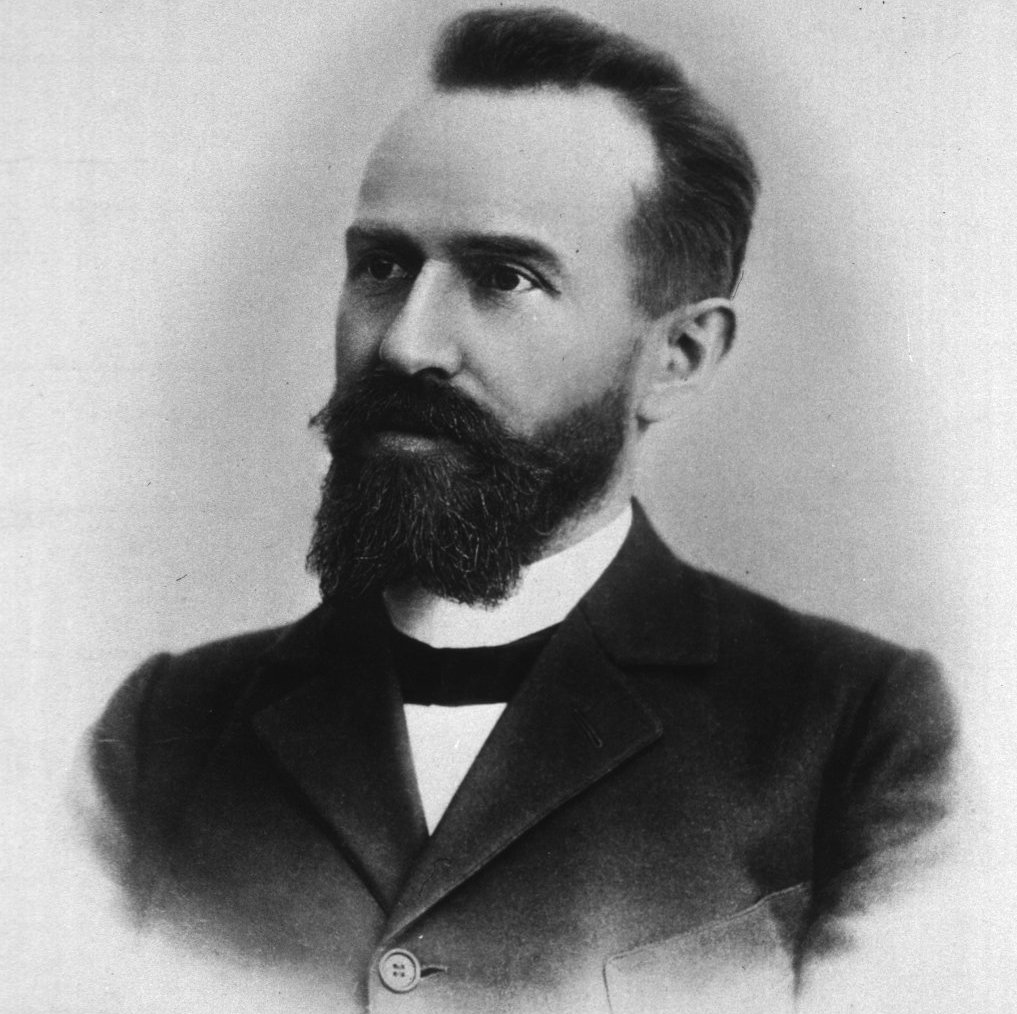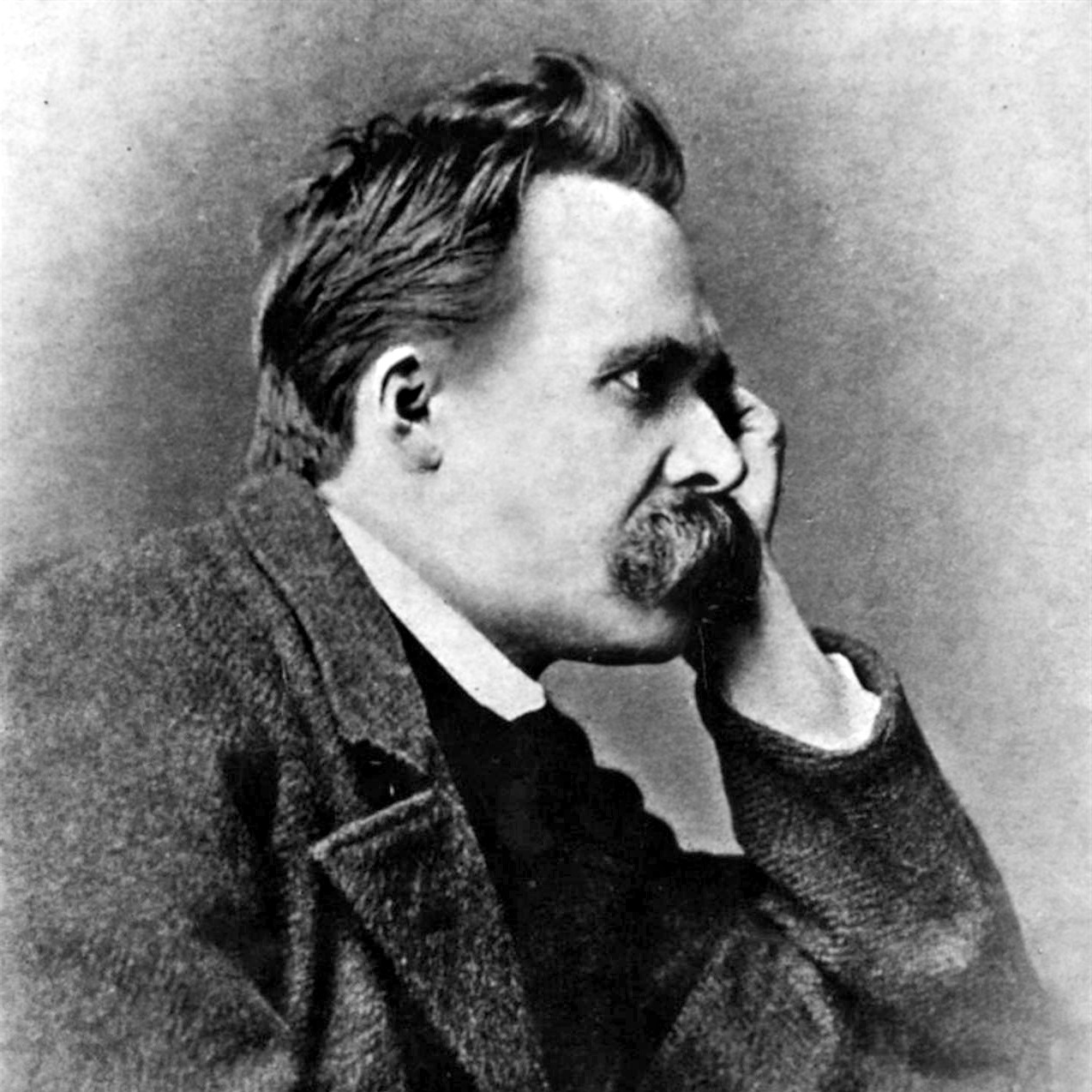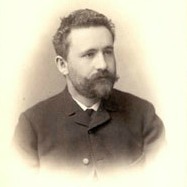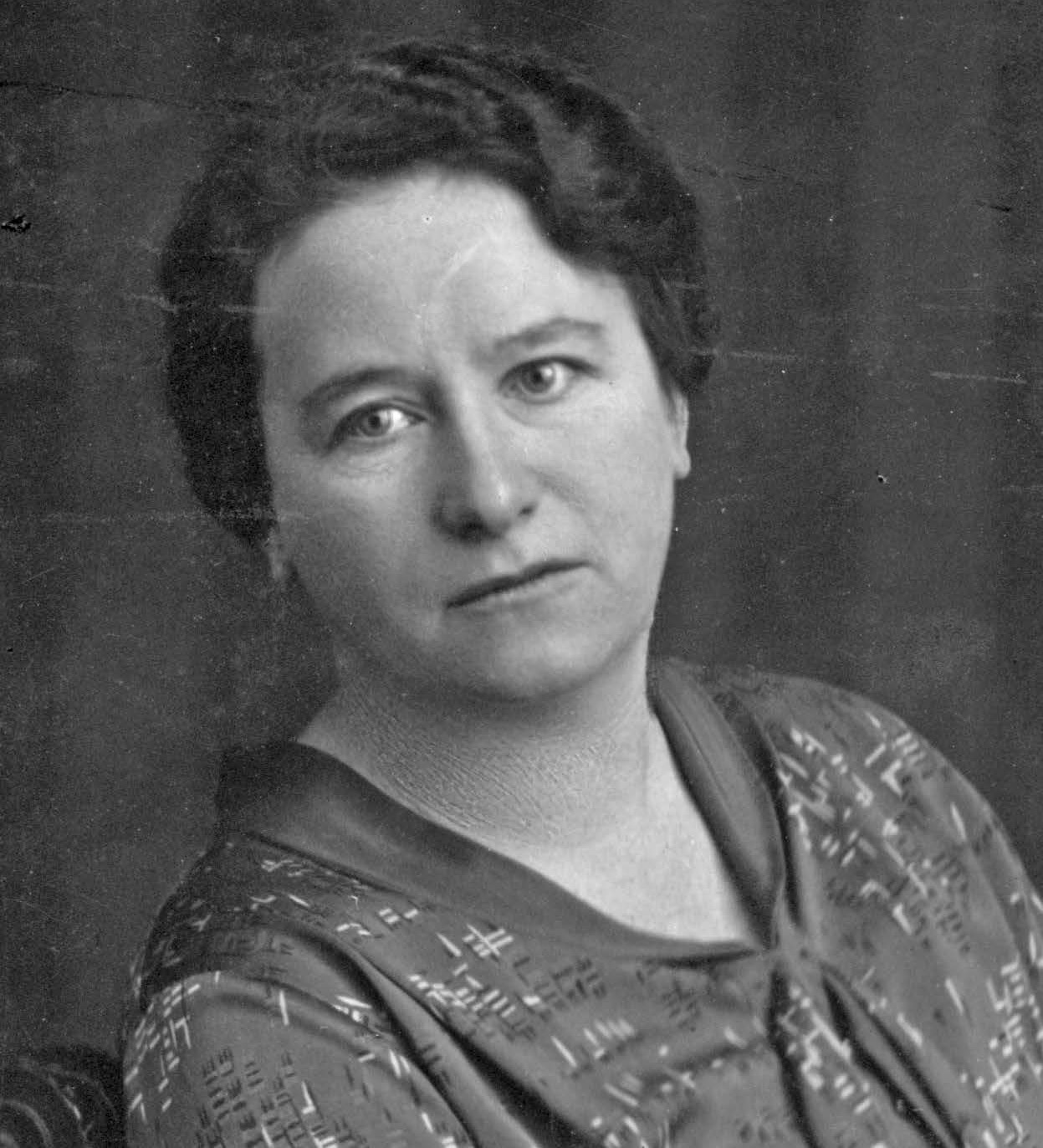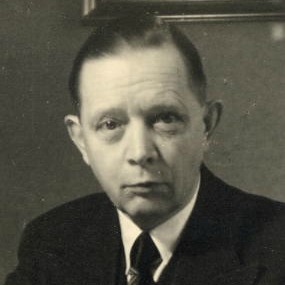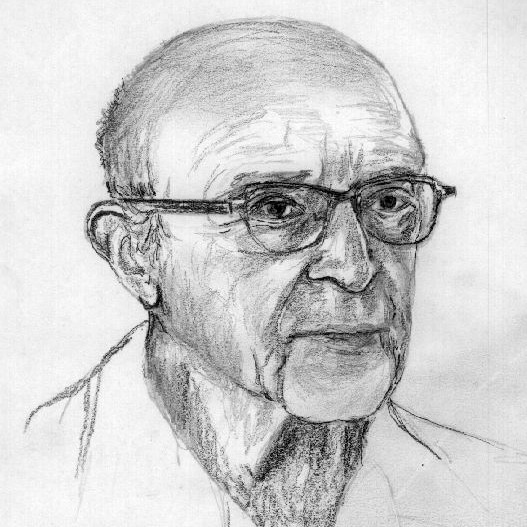- Surname:
- Asperger
- First name:
- Johann Friedrich Karl
- Era:
- 20th century
- Field of expertise:
- Medicine
Child and adolescent psychiatry
Therapeutic pedagogy - Place of birth:
- Hausbrunn (AUT)
- * 18.02.1906
- † 21.10.1980
Asperger, Hans
Austrian pediatrist and special needs educator (“Heilpädagoge”).
Johann Friedrich Karl “Hans” Asperger (1906–1980) was born on 18 February 1906 in Hausbrunn near Vienna. His father, Johann Asperger, was an accountant, his mother, Sofie Asperger (née Messinger), came from a farming family. He had two younger brothers, who both died early (Berger 2007; Feinstein 2010: 12 f.). Asperger was interested in science and decided to study medicine in Vienna. After obtaining his doctorate in 1913, he worked as a junior physician at Vienna University Children’s Hospital, followed by internships in Leipzig and Potsdam. In 1935, Asperger married Hanna Kalmon, a woman from rural Westphalia. The couple had four daughters and one son: Gertrud (born 1936), Hans (born 1938), Hedwig (born 1940), Maria (born 1946; a child and youth psychiatrist in Zurich), and Brigitte (born 1948) (Feinstein 2010: 13).
Professional career
As early as 1932, Asperger became the head of the special education section at Vienna Children’s Hospital where he worked with Valerie Bruck and the nurse Viktorine Zak (Frith 1991: 8) to combine medical therapy and learning support (Feinstein 2013). His lecture Das psychisch abnorme Kind [The Mentally Abnormal Child] on working with so-called “psychopathic” children was published in the journal Wiener Klinische Wochenschrift in 1938. He gained the formal qualification for a professorship (“Habilitation”) with his thesis Die “autistischen Psychopathen” im Kindesalter[The “autistic psychopaths” in childhood], submitted in 1943. In the same year, he was drafted into the German Wehrmacht and, in October 1944, was stationed in Croatia as medical officer of an infantry division (during the so-called “partisan war”; Sousek, 2015: 19; cf. excerpts from Asperger’s diary, in Asperger Felder 2008: 108). He returned to Vienna after the war and resumed his work at the Children’s Hospital in late August 1945. His monograph Heilpädagogik on the educational treatment of children with mental disorders and disabilities appeared in 1952. Asperger (co-)edited several pedagogical and pediatric journals. He was awarded the title of an associate professor in 1953 and appointed to the board of the Children’s Hospital at Innsbruck University in 1957. He also held top functions in several professional associations in Austria.
In 1962, Asperger was appointed professor of pediatrics at Vienna University and chairman of the University Children’s Hospital. Together with Hermann Gmeiner (1919–1986), the founder of the SOS Children’s Villages, he established a special education unit at the Children’s Village in Hinterbrühl, Lower Austria, in 1963 and directed this unit until his death (Berger 2007: 32). Asperger became emeritus in 1977 but remained professionally active until shortly before his death. He authored a total of 350 scientific publications (Sousek 2015: 20; Feinstein 2010, 2013). Hans Asperger died in Vienna on 21 October 1980 at the age of 74.
Autism and Asperger syndrome
Asperger evidently first used the adjective “autistic” in his 1938 article on “mentally abnormal” children to define a diagnostically distinct set of “psychopathies” in childhood (Volkmar 2015; Fitzgerald 2008: 1; Schirmer 2002). The term “autism” had initially been coined by Eugen Bleuler (1911) to describe a basic symptom of schizophrenia (cf. Fitzgerald 2012). Gruna Efimovna Sukhareva (1891–1981), a Russian child psychiatrist, apparently treated children to whom today’s term autism spectrum disorder (ASD) might have applied as early as 1926. In a publication appearing in Russian in 1925 and in German in 1926, Sukhareva described a syndrome that she called “schizoid psychopathy” (Manouilenk & Berejot 2015; Sinzig 2011:3). The Austro-American pediatrist Leo Kanner (1894–1981), who worked at Johns Hopkins Hospital in Baltimore under Adolf Meyer in 1943 and also described so-called “early-childhood autism” (1943; 1949; 1962), is said to have referred to Sukhareva – it is, however, not yet fully clear if and to what extent he was also aware of Asperger’s 1938 article. Kanner (1943: 242 ff.) emphasized the “innate disturbance of affective contact”, which clearly distinguished children affected by this disorder from schizophrenics.
Asperger’s professorial thesis, completed in 1943 and published in Vienna in 1944, also contains a typology of the “autistic psychopath” developed on the basis of four cases. Similar to Kanner, Asperger (1944: 49) wanted to show that the basic disorder in autistic psychopaths consists in a limited relationship with their social environment. He noticed a permanent and congenital impairment manifesting itself from the age of two and persisting over the entire lifetime, albeit usually with a good social prognosis (cf. Barahona-Correa & Filipe 2016; Gröger 2015; Attwood 2007: 16 f.; Bernier 2010: 2 ff.; Hippler & Klicpera 2003).
Asperger published in German, as a result of which his work initially received little international attention. His wiritings found a wider audience only after the British psychiatrist Lorna Wing translated them into English in 1981. It was Wing who replaced the outdated expression “autistic psychopaths” with the term “Asperger syndrome” (Demes 2011: 19). She already assumed that both Asperger syndrome and “early childhood autism” represent parts of an “autistic spectrum”. Further translations of Asperger’s work followed in 1991, this time by Uta Frith. Asperger syndrome was included in the International Classification of Diseases -10 in 1992 and in the Diagnostic and Statistical Manual of Mental Disorders in 1994 (Feinstein 2013: 266). The diagnostic category “Asperger syndrome” was, however, removed from the DSM-5 in 2013 – and since then there have been ongoing debates about whether the definition of autism-spectrum disorders has now become too narrow (Realmuto 2015; Dickerson Mayes, Black & Tierney 2013).
Today, both Asperger syndrome and Kanner’s “early childhood autism” are considered distinct forms within the autism spectrum and share many similarities (cf. Volkmar 2015; Pollak 2015; Sinzig 2011; Bernier & Gerdts 2010; Attwood 2007). But in contrast to early childhood autism, people with Asperger syndrome show no developmental retardation, they are mostly of average intelligence and have good or even very good verbal skills. What appears to be disturbed instead is their socio-emotional interaction and communication. In addition, they display stereotypical behaviors and specific peculiarities in their gaze, facial expressions, and gestures. Their filtering of sensory impressions is impaired, while logical thinking is not. Some of the affected people also exhibit highly special interests or the so-called “savant syndrome”. Asperger’s pedagogical principles are still applied today. These include, among other things, clearly structured daily routines and addressing the intellectual rather than the emotional level (Schirmer 2002).
The first autobiographical accounts by parents of Asperger children were published in the late 1960s, while the number of first-person accounts by people who are directly affected has been growing since the mid-1980s (e.g., Grandin 1996; 2007; Williams 1992). The genre is now increasingly being explored from a scientific angle in the field of Disability Studies (Orlando 2015; Bates 2010; Causton-Theoharis, Ashby & Cosier 2009; from a historical perspective, see Newman 2013).
Activities during the Nazi era
Hans Asperger’s attitude towards National Socialism has been under new scrutiny for some time (cf. Donvan & Zucker 2016: 327 ff.; Friedmann 2016, Czech 2015; Löscher 2009: 217 ff.; Asperger Felder 2008: 102 f.). The Viennese Eugenic Society was founded at Vienna University as early as 1924. After the annexation of Austria into Nazi Germany in March 1938, eugenics and racial hygiene were officially incorporated in research and teaching. The German Law for the Prevention of Hereditarily Diseased Offspring came into effect in Austria on 1 January 1940.
Britta Schirmer (2002) critically examined Asperger’s 1938 lecture on “mentally abnormal” children. She argues that his essay should be read as an ethically responsible advocacy for the children in his care – and this despite his use of racial-hygiene terminology: after first referring to the current social situation and its implications for psychiatry, Asperger changed the perspective from “the standpoint of public health” to that of “abnormal children”, a perspective that was incompatible with fascist ideology. The Austrian special needs educator Erwin Schuttermeier (2006) also concluded that Asperger “was clearly opposed to National Socialism” (cf. Berger 2007: 31; translated from German). Maria Asperger Felder (2008: 105) quotes an entry from her father’s diary according to which his Nazi-minded colleague Franz Hamburger (1874–1954) “saved” him twice from imminent arrest by the Gestapo at the clinic – but Donvan and Zucker (2016: 333 f.) point out that this “story … had only one source, and that was Asperger himself.”
According to Herwig Czech (2015: 24), Asperger’s attitude towards the Nazi regime and its ideology have long been described as “critical distance”, but new research suggests that there was a closer relationship indeed. Czech points out that Asperger was a member of German-nationalist organizations, signed letters with “Heil Hitler”, and had a girl suffering from encephalitis transferred to the Viennese children’s clinic Am Spiegelgrund where she fell victim to Nazi child euthanasia. Moreover, Ina Friedmann (2016: 309 ff.) reports that despite not being a member of the Nazi party itself, Asperger was demonstrably involved in activities on behalf of the German Labor Front (DAF) and the National Socialist People’s Welfare (NSV), and that he emphasized the hereditary properties of the children whom he was asked to assess. And according to Feinstein (2010: 15), Erich Schopler, a refugee from Nazi Germany who developed the TEACCH approach (which is often used in working with autists), also suspected that Asperger had connections with the Nazi regime.
Did Asperger have Asperger syndrome?
In an interview with Uta Frith (1989: 9), Maria Asperger Felder described her father as a distanced and quiet man (cf. Feinstein 2010: 13). He was said to have been an unusual and introvert boy, who found it difficult to make friends. His special talent for languages apparently became evident during his first years in school, and he is said to have quoted Austrian poets when still a young boy (Berger 2007: 29 ff,: Bernier 2010: 145). Lyons and Fitzgerald (2007) suggest that Asperger’s personality could itself well be described within the spectrum of autism disorders – and he reportedly “liked to joke that it helped to be a little autistic if you wanted to do things well” in his work (Feinstein 2010: 14).
Awards
1973: Honorary Member of the German Pediatric Society.
1965: Gold Medal of the City of Vienna.
1967: Member of the German National Academy of Sciences Leopoldina.
1968: Grand Decoration of Honor awarded by the Austrian state of Burgenland.
1972: Honorary Doctorate awarded by the Medical School of Ludwig Maximilian University of Munich.
1975: Cardinal Innitzer Science Award of the Roman Catholic Archdiocese of Vienna.
A few years ago, the “Heilpädagogische Gesellschaft Österreich” (Austrian Society for Therapeutic Pedagogy) started awarding the yearly Asperger Award to promote the scientific discussion of issues related to their discipline.
Literature
Asperger, H. (1938): Das psychisch abnorme Kind. In: Wiener Klinische Wochenschrift 51, pp. 1314–1317.
Asperger, H. (1944): Die Autistischen Psychopathen im Kindesalter. Habilitationsschrift; Aus der Wiener Universitäts-Kinderklinik, eingereicht bei der Medizinischen Fakultät der Wiener Universität. In: Archiv für Psychiatrie und Nervenkrankheiten 117 (1), pp. 76–136.
Asperger, H. (1952): Heilpädagogik. Einführung in die Psychotherapie des Kindes. Vienna: Springer.
Asperger, H. (1960): Moderne Problematik zerebraler Störungen im Kindesalter. In: Wiener Medizinische Wochenschrift 110, pp. 1002–1004.
Asperger, H. (1968): Zur Differentialdiagnose des kindlichen Autismus. In: Acta paedopsychiatrica 35, pp. 136–145.
Asperger Felder, M. (2015): Zum Sehen geboren, Zum Schauen bestellt … In: A. Pollak (ed.): Auf den Spuren Hans Aspergers. Fokus Asperger-Syndrom: Gestern, Heute, Morgen. Stuttgart: Schattauer, pp. 38–43.
Asperger Felder, M. (2008): “Zum Sehen geboren, Zum Schauen bestellt.” Hans Asperger (1906–1980): Leben und Werk. In: R. Castell (ed.): Hundert Jahre Kinder- und Jugendpsychiatrie. Göttingen: V&R unipress, pp. 99–118.
Attwood, T. (2007): Ein ganzes Leben mit dem Asperger-Syndrom. Alle Fragen – alle Antworten. Stuttgart: Trias-Verlag.
Barahona-Correa, J. B., C. N. Filipe (2016): A Concise History of Asperger Syndrome. The Short Reign of a Troublesome Diagnosis. In: Frontiers in Psychology 6, 2024 (URL: https://www.ncbi.nlm.nih.gov/pmc/articles/PMC4725185/).
Bates, G. (2010): Autism in Fiction and Autobiography. In: Advances in Psychiatric Treatment 16 (1), pp. 47–52.
Berger, M. (2007): Hans Asperger. Sein Leben und Wirken. In: heilpaedagogik.de 5 (4), pp. 29–32.
Bernier, R., J. Gerdts (2010): Autism Spectrum Disorders. A Reference Handbook. Santa Barbara: ABC-Clio.
Bleuler, E. (1911): Dementia praecox oder Gruppe der Schizophrenien. (Handbuch der Psychiatrie, edited by G. Aschaffenburg). Leipzig/Vienna: Deuticke.
Buchka, M., R. Grimm, F. Klein (2000): Lebensbilder bedeutender Heilpädagoginnen und Heilpädagogen im 20. Jahrhundert. Munich: Reinhardt.
Causton-Theoharis, J., C. Ashby, M. Cosier (2009): Islands of Loneliness: Exploring Social Interaction Through the Autobiographies of Individuals With Autism. In: Intellectual and Developmental Disabilities 47 (2), pp. 84–96.
Czech, H. (2015): Hans Asperger und die “Kindereuthanasie” in Wien – mögliche Verbindungen. In: A. Pollak (ed.): Auf den Spuren Hans Aspergers. Fokus Asperger-Syndrom: Gestern, Heute, Morgen. Stuttgart: Schattauer, pp. 24–29.
Czech, H. (2003): Erfassung, Selektion und “Ausmerze”. Das Wiener Gesundheitsamt und die Umsetzung der nationalsozialistischen “Erbgesundheitspolitik” 1938 bis 1945. Vienna: Deuticke.
Demes, B. (2011): Als käme ich von einem anderen Stern. Schülerinnen und Schüler mit Aspergersyndrom. Oberhausen: Athena-Verlag.
Dickerson Mayes, S., A. Black, C. D. Tierney (2013): DSM-5 Under-Identifies PDDNOS: Diagnostic Agreement Between the DSM-5, DSM-IV, and Checklist for Autism Spectrum Disorder. In: Research in Autism Spectrum Disorders 7, pp. 298–306.
Donvan, J., C. Zucker (2016): In a Different Key. The Story of Autism. New York: Crown.
Feinstein, A. (2013): Asperger, Hans. In: F. R. Volkmar (ed.): Encyclopedia of Autism Spectrum Disorders. New York: Springer-Verlag, pp. 265–267.
Feinstein, A. (2010): A History of Autism. Conversations with the Pioneers. Chichester: Wiley-Blackwell.
Fitzgerald, M. (2012): Schizophrenia and Autism/Asperger’s Syndrome: Overlap and Difference. In: Clinical Neuropsychiatry 9 (4), pp. 171–176.
Fitzgerald, M. (2008): Autism: Asperger’s syndrome – History and First Descriptions. In: J. L. Rausch, M. E. Johnson & M. F. Casanova (eds.): Asperger’s Disorder. New York/London: informa, pp. 1–5.
Friedmann, I. (2016): Hans Asperger und die Heilpädagogische Abteilung der Wiener Universitätskinderklinik. Konzepte und Kontinuitäten. In: M. Krischel, M. Schmidt, D. Groß (eds.): Medizinische Fachgesellschaften im Nationalsozialismus. Berlin: Lit Verlag, pp. 309–320.
Frith, U. (1991): Asperger and His Syndrome. In: U. Frith (ed.): Autism and Asperger Syndrome. Cambridge: Cambridge University Press, pp. 1–36.
Grandin, T. (1996): Thinking in Pictures. And Other Reports From My Life With Autism. New York: Vintage Books.
Grandin, T. (2007): The Way I See it. The Dangers of Trait Over-Selection. Colorado State University Libraries: Morris.
Gröger, H. (2015): Zur Ideengeschichte der medizinischen Heilpädagogik – Hans Asperger und das Syndrom des “Autistischen Psychopathen”. In: A. Pollak (ed.): Auf den Spuren Hans Aspergers. Fokus Asperger-Syndrom: Gestern, Heute, Morgen. Stuttgart: Schattauer, pp. 30–37.
Hippler, K., C. Klicpera (2003): A Retrospective Analysis of the Clinical Case Records of “Autistic Psychopaths” Diagnosed by Hans Asperger and His Team at the University Children’s Hospital, Vienna. In: Philosophical Transactions of The Royal Society of Biological Sciences 358, pp. 291–301.
Joppich, G. (1971, ed.): Lehrbuch der Kinderheilkunde. Stuttgart: Fischer.
Osborne, L. (2002): American Normal: The Hidden World of Asperger Syndrome. New York: Copernicus Books.
Kanner, L. (1962): Emotionally Disturbed Children. A Historical Review. In: Child Development 33 (1), pp. 97–102.
Kanner, L. (1949): Problems of Nosology and Psychodynamics of Early Infantile Autism. In: American Journal of Orthopsychiatry 19 (3), pp. 416–426.
Kanner, L. (1943): Autistic Disturbances of Affective Contact. In: Nervous Child Year 2, pp. 217–250.
Löscher, M. (2009): “...der gesunden Vernunft nicht zuwider...”?: Katholische Eugenik in Österreich vor 1938. Innsbruck/Vienna: Studien-Verlag.
Lyons, V., M. Fitzgerald (2007): Did Hans Asperger (1906–1980) Have Asperger Syndrome? In: Journal of Autism and Developmental Disorders 37 (10), pp. 2020–2021.
Manouilenko, I., S. Bejerot (2015): Sukhareva – Prior to Asperger and Kanner. In: Nordic Journal of Psychiatry 69 (6), pp. 1761–1764.
Mesibov, G. B., V. Shea; E. Schopler (2004, ed.): The Teacch Approach to Autism Spectrum Disorders. New York: Springer-Verlag.
Newman, S. (2013): Writing Disability: A Critical History. Boulder: firstforumpress.
Orlando, M. I. (2015): Relational Representation: Constructing Narratives and Identities in Auto/Biography about Autism. Doctoral Thesis, Department of English. Cleveland: Case Western Reserve University.
Pollak, A. (2015; ed.): Auf den Spuren Hans Aspergers. Fokus Asperger-Syndrom: Gestern, Heute, Morgen. Stuttgart: Schattauer.
Poustka, F. (2015): Autismus-Spektrum-Störung – Hans Asperger und klinische Aspekte heute. In: A. Pollak (ed.): Auf den Spuren Hans Aspergers. Fokus Asperger-Syndrom: Gestern, Heute, Morgen. Stuttgart: Schattauer, pp. 1–14.
Realmuto, G. M. (2015): Autism Spectrum Disorder: Diagnostic Considerations. In: S. H. Fatemi: The Molecular Basis of Autism. New York/Heidelberg: Springer, pp. 15–21.
Schirmer, B. (2002): Autismus und NS-Rassengesetze in Österreich 1938. Hans Aspergers Verteidigung der “autistischen Psychopathen” gegen die NS-Eugenik. In: Die neue Sonderschule 47 (6), pp. 460–464.
Schmuttermeier, E. (2006): Aspergers Spuren in der Heilpädagogik. In: Heilpädagogik 49 (3), pp. 11–16.
Silberman, S. (2015): NeuroTribes. The Legacy of Autism and the Future of Neurodiversity. New York: Avery.
Sinzig, J. (2011): Frühkindlicher Autismus. Manuale psychischer Störungen bei Kindern und Jugendlichen. Berlin: Springer-Verlag.
Sousek, R. (2015): Hans Asperger (1906–1980) – Versuch einer Annäherung. In: A. Pollak (ed.): Auf den Spuren Hans Aspergers. Fokus Asperger-Syndrom: Gestern, Heute, Morgen. Stuttgart: Schattauer, pp. 15–23.
Sukhareva, G. J. (1926): Die schizoiden Psychopathien im Kindesalter. In: Monatsschrift für Psychiatrie und Neurologie 60, pp. 235–261.
Volkmar, F. R. (2015): A Brief History of Autism. In: S. H. Fatemi: The Molecular Basis of Autism. New York/Heidelberg: Springer, pp. 3–14.
Volkmar, F. R. (2013, ed.): Encyclopedia of Autism Spectrum Disorders. New York: Springer-Verlag.
Wing, L. (2015): Development of the Concept of the Autism Spectrum. In: A. Pollak (ed.): Auf den Spuren Hans Aspergers. Fokus Asperger-Syndrom: Gestern, Heute, Morgen. Stuttgart: Schattauer, pp. 44–51.
Wing, L. (1991): The Relationship Between Asperger’s Syndrome and Kanner’s Autism. In: U.
Frith (ed.): Autism and Asperger Syndrome. Cambridge: Cambridge University Press, pp. 93–121.
Wing, L. (1981): Asperger Syndrome: A Clinical Account. Psychological Medicine 11 (1) pp. 115–129.
Williams, D. (1992): Nobody Nowhere. The Extraordinary Biography of an Autistic Girl. Garden City: DoubleDay.
Burkhart Brückner, Annette Baum
Referencing format
Burkhart Brückner, Annette Baum (2016):
Asperger, Hans.
In: Biographisches Archiv der Psychiatrie.
URL:
www.biapsy.de/index.php/en/2-uncategorised/288-asperger-hans
(retrieved on:02.07.2025)

